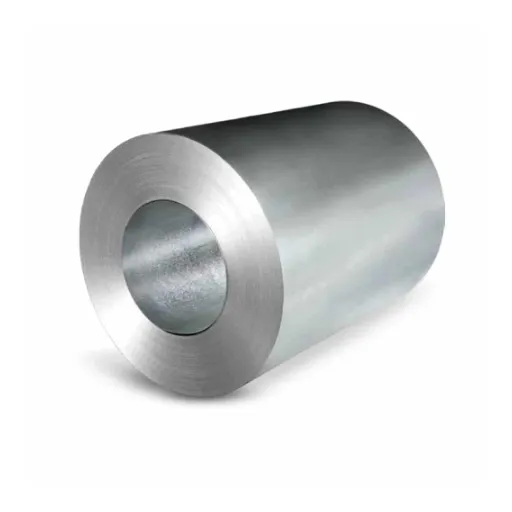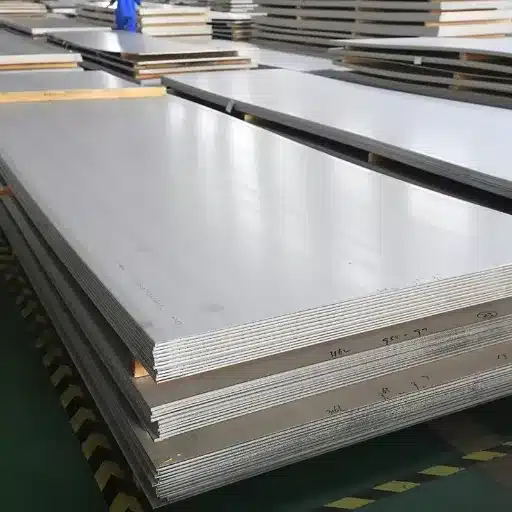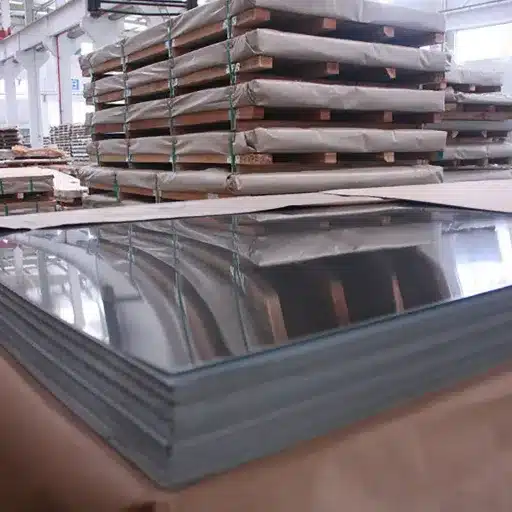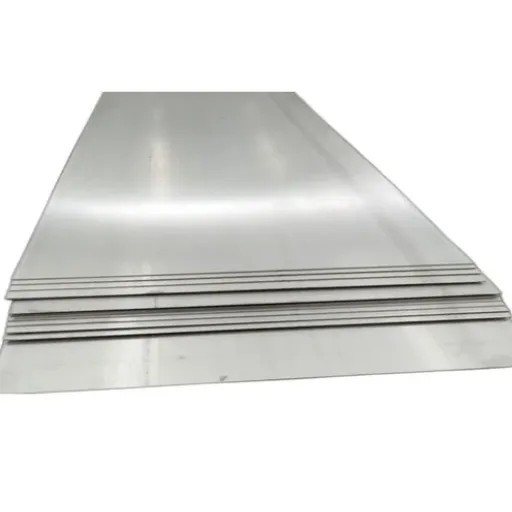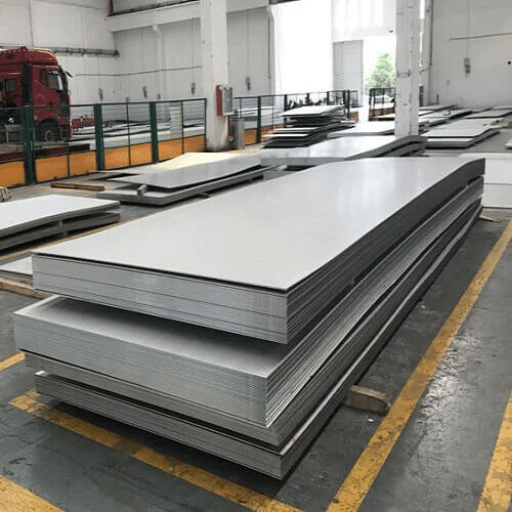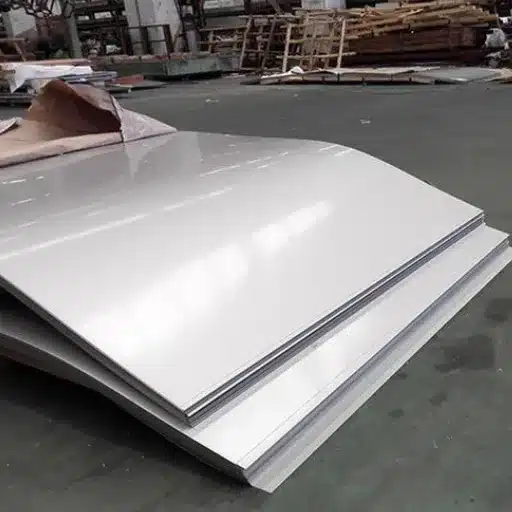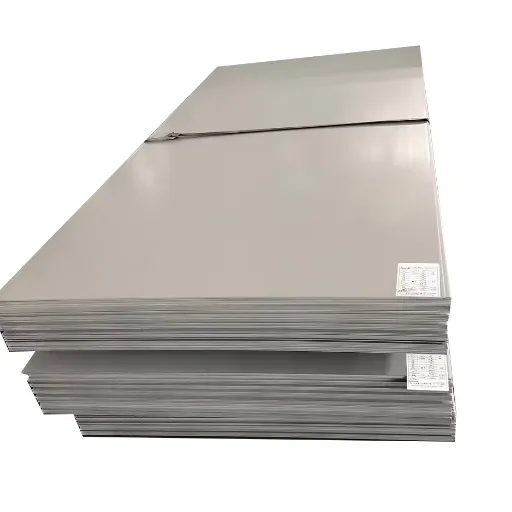Galvanized sheet metal coils are very important in different industries because of their wonderful durability, corrosion resistance, and versatility for various applications. The construction and automotive industries are a few examples where these special materials have become indispensable because of their good properties and low maintenance. This article will take you through the very complicated manufacturing of galvanized sheet metal coils, zinc coating processes to quality control and the many industries using them. If you are a professional in the field or just interested in the engineering wonders that support our daily lives, this complete guide will explain the science and usefulness that make galvanized sheet metal coils essential.
Overview of Galvanized Steel Coils
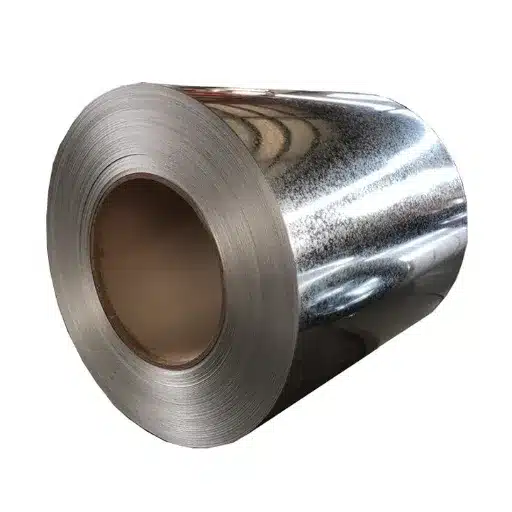
Definition and Characteristics of Steel Coils
Steel coils are flat-rolled steel products that have been formed into an uninterrupted coil. They are the basic materials in industrial production because of their wide usage, long life, and low price. Produced by hot-rolling or cold-rolling, steel coils come in different thicknesses and widths, which can be modified to suit the needs of different applications. Their flexibility in this aspect leads to their use in many industries like construction, automotive, etc.
Among the main features of steel coils are very high tensile strength, good corrosion resistance (if treated or coated), and high ductility. These features allow steel coils to not only withstand working forces when framing but also to be formed into different shapes and parts very easily. Furthermore, when coated with materials like zinc (as with galvanized steel coils), they become very resistant to moisture, oxidation, and other environmental factors over a long period of time, thus being very effective even in harsh conditions.
The main uses of steel coils are across different industries. In the case of construction, for instance, they are mostly for roofing, siding, and support structures. Automotive sector uses steel coils to make panels, frames, and other components, utilizing their excellent strength-to-weight ratio. Their ubiquitous presence across various industries has made steel coils an integral part of contemporary engineering and manufacturing processes.
Understanding Galvanized Steel Coils
Galvanized steel coils are made of carbon steel that has been coated with a layer of zinc to prevent the metal from corroding and rusting. There are various ways to apply this coating, hot-dip galvanizing being one of them, where the steel goes through molten zinc and another one is electro-galvanizing, which uses a chemical process to achieve a similar result. The layer of zinc acts as a barrier, which eliminates the steel from exposure to moisture, oxygen, and harmful substances that deplete and oxidize the steel and thus the steel is saved from being corroded and rusted.
Among the advantages of galvanized steel coils, durability is the most important one. The zinc coating not only stops rust but also lengthens the steel’s life span which makes it suitable for the demanding applications. These coils find their usage in the construction, automotive, and manufacturing industries. For instance, they are used in roofs, fences, and ducts for heating and air conditioning systems, and also in making parts of car bodies, wherein their capability to endure difficult conditions is a must.
Moreover, galvanized steel coils are an economical option when opposed to other materials that resist corrosion. They have an almost zero maintenance requirement and perform very well in all kinds of environments, from hot and humid coastal regions to heavy industrial areas. Their flexibility, low prices, and dependability make them the backbone of a plethora of engineering and manufacturing applications. These characteristics indicate the necessity of galvanized steel coils in dealing with both the functional and economic issues of the modern industrial processes.
Importance of Sheet Metal in Various Industries
Sheet metal is very much needed in various industries and it is also durable, versatile, and easy to manufacture. It is the foundation for various products and components and allows the production in automotive, aerospace, construction, and electronics to be efficient. Its properties of resisting harsh environmental conditions like temperature changes and corrosion guarantee trustworthiness for a long period, which is why its use in industries is favored.
The automotive sector cannot do without sheet metal for making vehicle exteriors, structural parts, and even the most complex ones. The properties of being light in weight and having high strength together add up to fuel consumption reduction and safety. In the same way, the aerospace industry is using sheet metal for the building of aircraft fuselages, wings, and other highly efficient parts, where accuracy and material strength are critical.
The construction, infrastructure, and similar projects are taking the most help from roofing, cladding, and sheet metal in the structural frameworks. Its versatility makes it possible for it to be shaped and formed in many ways, fulfilling various architectural and engineering requirements. Moreover, electronics use sheet metal in the form of enclosures and protective components, thus allowing the devices to work properly while also being guarded against the outside factors. The large-scale use of sheet metal is again and again proving its crucial role in all industries, as it is the main support for both the innovations and the efficiency, and at the same time, it is the balancing factor of cost-effectiveness and performance.
Manufacturing Process of Galvanized Steel Coils
Hot-Dip Galvanization Process Explained
The process of hot-dip galvanization entails the dip of iron or steel into hot molten zinc thus a very thick, rust-proof coating is deposited on the metal. A major factor in deciding the success of the process is surface preparation which is done to make sure that the zinc sticks the best possible way. The preparation is usually done through three steps: degreasing to get rid of dirt, oil, and grease; pickling to remove rust and mill scale with acid; and fluxing to eliminate the oxides and at the same time assure a good bond between the steel and the zinc.
Key Process Steps:
- Degreasing: Removal of dirt, oil, and grease
- Pickling: Removal of rust and mill scale with acid
- Fluxing: Elimination of oxides and ensuring good bond
- Immersion: Submersion in molten zinc at ~840°F (450°C)
- Cooling: Air cooling for zinc solidification
After the surface is ready, the steel parts are immersed in molten zinc at around 840°F (450°C). Together with the heat a metallurgical reaction between zinc and steel starts taking place and intermetallic layers are formed, which provide the strongest bonding and the best resistance. After the immersion, the component is taken out from the bath and left to cool in the open air where the zinc solidifies and turns into a bright protective outer layer. This method not only protects the material for a long time against even the harshest environmental conditions but also grants the material hardness and thus protection from abrasion due to the metallurgical layers.
The main characteristics of hot-dip galvanized steel are its ability to heal itself at scratches or damaged areas thanks to the zinc’s galvanic action and a maintenance-free lifespan that in most environments is more than 50 years. Furthermore, research suggests that hot-dip galvanization has low environmental impact, which is mainly due to the natural recyclability of zinc and the very little waste generated in the processing.
Quality Control in Manufacturing
Quality control in manufacturing has to be effective in order to make sure that all goods produced have the same quality as previously determined. On one hand, the use of advanced testing methods such as non-destructive testing (NDT) is becoming more popular in the manufacturing industry, which mainly examines the material integrity without impairing the product’s use. The processes that come under NDT include ultrasonic testing, X-ray imaging, and eddy-current testing, which will allow one to conduct a thorough examination of the elemental and outer properties of the product.
In addition, statistical process control (SPC) is another very important instrument regarding the control of production processes that relies on the collection and analyzing of real-time data to spot variations and consequently eliminate defects. Newer factories are using Industry 4.0 technologies like IoT sensors and AI algorithms for quality assurance where the whole process of quality assurance is automated and potential failures detected beforehand. Not only does this help with precision but also in maximizing production output.
The following international standard ISO 9001 is a major factor that strengthens customer loyalty and at the same time guarantees adherence to legal requirements. Through nurturing the mindset of ongoing betterment, manufacturers will be able to cut down on expenses, redoing of work will not be necessary, and the output will always be first-rate.
Comparing Manufacturing Techniques
When evaluating manufacturing processes, a thorough comparison usually consists of the assessment of major factors like cost-efficiency, production speed, scalability, sustainability, and product quality. Low-volume production is often the domain of traditional methods, like machining or casting, since they have lower initial investments in tooling and equipment. However, these methods can produce more scrap and take longer to finish the job.
Advanced techniques, like additive manufacturing (3D printing) and precision CNC machining, have been gaining acceptance because they are able to create very complex shapes with almost no material loss. Additive manufacturing in particular is able to deliver rapid prototyping and on-demand production, thereby cutting down the time to market for new product designs. Conversely, injection molding is still the most effective way to produce large quantities of the same part with minimal variation, thus it is still the preferred process in the mass production of many industries.
Sustainability is another major point of differentiation among processes. Conventional ones use up a lot of resources and emit higher pollution levels, while newer ones are progressively taking on the opposite stance by adopting energy-efficient approaches and using recyclable inputs. In the end, the choice of a manufacturing process comes down to the particular operational needs, the volume of production, and the environmental factor that is the priority for the manufacturer.
Applications of Galvanized Sheet Metal Coils
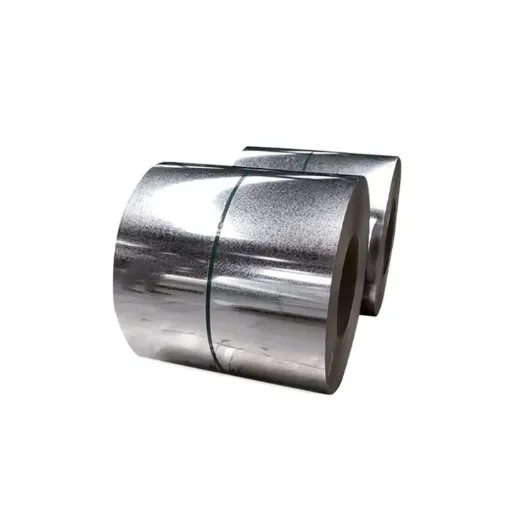
Construction Industry Uses
Roofing Systems
Galvanized sheet metal is widely accepted for roofing because it is able to resist the harshest weather conditions. The zinc coating not only protects the metal from rust but also increases the lifespan of the product. As per the industry standards, a galvanized roof can be that of over 50 years if maintained properly.
Walls and Siding Panels
These coils are a perfect material for exterior walls and siding since they are strong and resistant to environmental degradation. Galvanized panels make the cost of the building lower and enhance the energy efficiency of the house when the right kind of insulation is used with them.
HVAC Ductwork
Heating, ventilation, and air conditioning (HVAC) systems use galvanized sheet metal coils to the inch of their requirement. Its coating provides the ducting with a long life and keeps it up to the world sanitary standards as they are resistant to rust and moisture.
Structural Components
Steel is the selected material for making the framework of buildings by using beams, columns, and other supporting components so that it is strong and stable. Structural steel with high tensile strength is less likely to fail due to excessive loads or during earthquakes.
Guardrails and Fencing
The rust-resistant and durable characteristics of galvanized sheet metal make it a prime candidate for guardrails and fencing. These attributes guarantee safety and dependability for the long term in places that are frequently visited or are otherwise exposed.
Automotive Sector Applications
Galvanized steel is the key player in the automotive industry mainly because of its long-lasting nature, pro-active rust prevention, and economical use. The applications are stated below where the use of galvanized steel is done in the first place:
- Body Panels
The process of making automobile body panels like hoods, fenders, and doors includes a lot of galvanized steel. The zinc coating on the steel protects it from rust and gives it a long life, especially where the weather is bad or there is a lot of moisture. - Chassis and Structural Components
And just to mention, the chassis and the major parts of cars are often made with galvanized steel ones, to be more exact, to determine corrosion less. This, in turn, prolongs the vehicle lifespan and safe performance over time. - Exhaust Systems
Galvanized Steel, being exposed to hot gases and the environment, would be the strongest metal to resist such conditions. Its heat resistance and anti-corrosion properties make it ideal for this application, ensuring optimal performance and durability. - Fuel Tanks
Using galvanized steel in tanks would mean no corrosion inside and outside, even with fuels for a long time. Thus, the tank’s strength is preserved, and the risk of fuel contamination is minimized. - Suspension Components
Different suspension parts like springs and mounting brackets are made with galvanized steel. The steel’s ability to endure constant stress and environmental factors ensures the dependability and consistency of vehicle performance.
The various applications mentioned above highlight not only the versatility of galvanized steel but also its necessity in the automotive industry.
Manufacturing and Industrial Applications
Galvanized steel is widely used in the manufacturing and industrial sectors due to its superb durability, ability to resist corrosion, and low price. Below are five crucial applications that showcase its functional and structural importance:
- Structural Frameworks
Galvanized steel is the main material for the construction of structural frameworks in buildings, bridges, and industrial plants. The zinc coating gives the material absolute protection from corrosion for many years, so that about 40% of the maintenance costs during the lifespan of a building are saved. - HVAC Systems
Heating, ventilation, and air conditioning (HVAC) systems often consist of galvanized steel ducting and components. The metal’s resistance to high humidity and wide temperature swings guarantees that it will perform well and last longer in harsh environments. - Agricultural Equipment
Galvanized steel is a major raw material for making agricultural machinery, including silos, fencing, and irrigation setups. Research studies indicate that appropriately galvanized agricultural implements are not only able to take the abuse of weather and chemicals but also last 20–30 years. - Electrical Transmission Towers
Galvanized steel is the preferred material for sagging electrical lines and poles due to their high-tensile strength properties. These constructions are subjected to extreme weather like windstorms and heavy snow, but the zinc coatings provide protection and trust in one of the longest lifespans of fabrication. - Storage Tanks and Containers
Galvanized steel is the material of choice for industrial chemical, water, and fuel tanks due to its extraordinary leak and contamination resistance. This not only aids in meeting stringent industry safety requirements but also prolongs the service life by around 50%.
Every single application proves the vital importance of galvanized steel in supporting and enhancing the efficiency, and durability of industrial processes.
Advantages of Using Galvanized Steel Coils
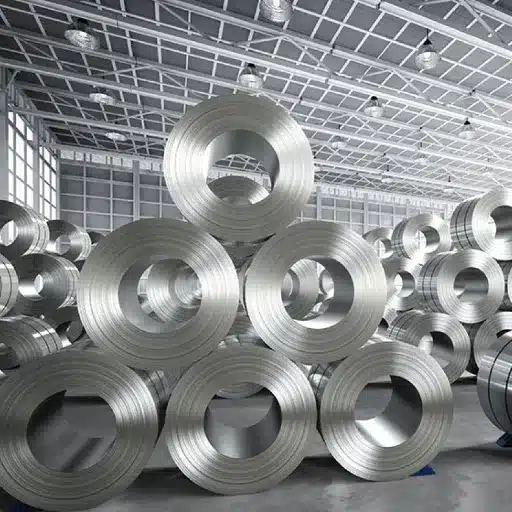
Durability and Corrosion Resistance
Galvanized steel coils have a reputation for being extremely durable and corrosion-resistant, which guarantees reliability even in harsh conditions over a long period. The main reason for such resistance is the zinc coating, which protects the steel from moisture, air, and other corrosive agents. The following five points explain the durability and corrosion resistance of galvanized steel coils in detail:
- Long-Lasting Protection
It is found that the life cycle of galvanized surfaces can range from 50 years in places with little exposure to 25 years in severe industrial or coastal environments without any noticeable maintenance. - Cathodic Protection
Zinc is used as a protective coating that gives sacrificial; which means that it will corrode first and then the steel will be under its protection, therefore zinc is prolonging the life of the steel even if the coating is scratched or torn. - Uniform Coating
The process of galvanization guarantees the whole steel surface to receive equal protection; this is very important when dealing with complex structures or engineered parts since it makes them less prone to corrosion starting from any weak point. - Resilience in Harsh Conditions
Galvanized steel coils can withstand severe weather conditions, such as rain, snow, and pollution, for a long time without losing their structural integrity. So they are very suitable for outdoor uses like construction and infrastructure. - Cost-Effective Durability
Even though they are highly resistant, galvanized steel coils are still very economical as the requirement for frequent replacement or extensive maintenance is virtually eliminated as compared to other corrosion-resistant materials.
Given these properties, galvanized steel coils have become a necessity in industries that demand strong, durable, and eco-friendly materials that can resist environmental degradation.
Cost-Effectiveness Compared to Alternatives
Galvanized steel coils, in comparison to various other materials resistant to corrosion, are a lot cheaper. The cost-effectiveness of galvanized steel not only comes from the upfront material cost but also from the maintenance being less, the life span being longer, and the replacements being few. Here are five thorough comparisons showing the advantages of galvanized steel coils over the most common alternatives:
| Comparison | Key Insights |
|---|---|
| Galvanized Steel vs. Stainless Steel | Even though stainless steel is definitely the winner in terms of corrosion resistance, its price is much higher than galvanized steel. In some projects, where the time of corrosion resistance is not very critical, the alternative of steel that is galvanized is durable and costs much lesser than the stainless steel’s initial price. |
| Galvanized Steel vs. Aluminum | Aluminum is lighter in weight and it does resist corrosion but it’s also softer and less durable than galvanized steel. When strength and heavy-duty applications are the main concerns, galvanized steel definitely provides more structural strength and integrity at lower cost. |
| Galvanized Steel vs. Painted Steel | Steel that is painted on requires finishing layers and repainting very often to ensure that the protection from corrosion is consistent. On the other hand, galvanized steel has the zinc coating built in that serves as a prevention measure against corrosion, thus lowering the maintenance costs for the painting. |
| Galvanized Steel vs. Plastics | When it comes to the resistance of plastics to some types of corrosion, their resistance is by no means of the structural strength needed for most industrial uses. Steel that is galvanized has mechanical strength and resistance to corrosion for a long time, thus giving a better price-performance ratio, particularly in applications involving load-bearing situations. |
| Galvanized Steel vs. Copper | Copper is a tough and corrosion-resistant metal; however, its very high cost prevents it from being used on a large scale. Galvanized steel coats itself with a protection layer against corrosion that is not only durable but also cheap in comparison to the copper. Hence, it is the right choice of industry where budget constraints are the major consideration. |
The above comparisons make it clear the reason why galvanized steel is still the material of choice in applications that are focused on cost and require both durability and resistance. In fact, it is the affordability of the steel throughout the initial purchasing and life-cycle management that leads to the savings over time being so substantial.
Influence on Sustainability Practices
Galvanized steel is a major contributor to sustainability practices through its various factors. It is known for its capacity to provide a comfortable and green working environment at the same time being efficient and cost-effective. Galvanized steel has five main points in the following list, which are the ways by which it affects the sustainability practices.
♻️ Recyclability
Galvanized steel is completely recyclable and its quality is not affected. It is estimated that almost 80% of steel production worldwide is recycled, hence relying less on raw materials and cutting down on waste in industrial processes. This in turn makes the material vital for realization of the circular economy’s objectives.
⏱️ Extended Service Life
One of the advantages that galvanized steel possesses is its ability to resist corrosion, which considerably prolongs the life span of structures and products. Thus, the frequent replacements, which consume resources and ultimately increase the environmental footprint, are avoided. As a general rule, galvanized steel products can live more than 50 years in rural areas and more than 25 years in harsh industrial or coastal conditions.
⚡ Energy Efficiency in Production
The production of galvanized steel has been done in a manner that saves energy. It is said that the galvanizing process requires less energy to produce the same durability as stainless steel, which is a positive point compared to other corrosion-resistant alternatives. Consequently, this reduces the greenhouse gases emitted during the steel production process.
🔧 Minimal Maintenance Requirements
Galvanized steel’s long life span makes it rarely require maintenance, thus, the environmental impact of supplying repair materials, chemicals and energy usage is lessened. The maintenance-free property allows the production sectors to have both sustainability and uptime priorities met.
♻️ Reduction of Material Waste
The galvanized coatings on steel, which protect against corrosion, actively work to prolong the life of the steel and hence reduce the waste due to the steel being used up or corroded.
By the amalgamation of these characteristics in the industrial and infrastructural development, galvanized steel is the resource that is used efficiently, the sustainability initiatives that are enhanced and the global environmental impact that is reduced through its pivotal role.
Current Trends in the Galvanized Steel Coil Industry
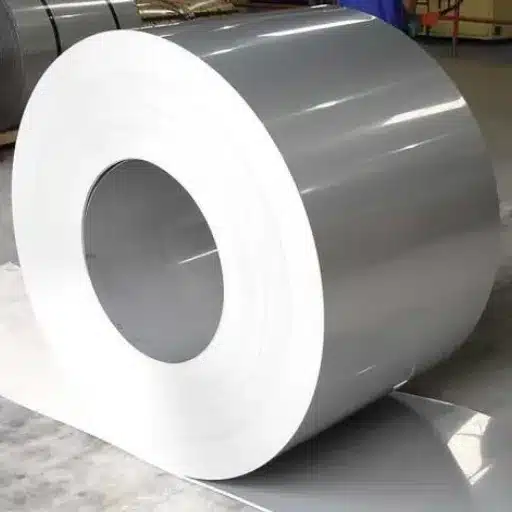
Innovations in Coating Technology
Galvanized steel products have been getting better and better because of the recent innovations in coating technology that have aimed at making them perform better, be more efficient, and be more sustainable. Among the innovations, the advanced zinc-aluminum-magnesium (Zn-Al-Mg) alloy coatings stand out as they offer the highest corrosion resistance among other coatings. These new coatings are really effective even in the toughest places where there are a lot of salts, humidity, and air pollutants.
Moreover, the industry has heavily invested in nanotech-based coatings, thus the coatings that the industry has got so far have already made their surface properties better at the molecular level. These coatings have the ability to self-heal – they can repair micro-scratches on their own and thus maintain the integrity of the structure and at the same time prolong the life of the product.
One more thing that has had a major impact is the use of the eco-friendly coating process. For example, manufacturers are using chromium-free passivation treatments which not only comply with the tightest environmental regulations but also deliver the same, if not better, protective properties as the traditional methods. Such a transition is in line with the global sustainability goals and ensures that the products are of international quality.
Moreover, the industry has also been using advanced digital tools and real-time monitoring technologies which have also played a part in coating improvements by offering the possibility of very precise control of the thickness uniformity and adherence quality. These precision techniques not only cut down on the amount of material wasted but also guarantee a consistent performance which meets the needs of both cost-efficiency and quality assurance.
These coating technology developments in the galvanized steel market are the fruit of continuous research and development which the industry has committed to, through which the environmental and performance expectations are gradually changing and being met in the market.
Market Trends and Industry Growth
The galvanized steel sector is growing rapidly because of the increasing demand from various sectors such as construction, automotive, and renewable energy. Market trends reveal a change towards more eco-friendly and high-performance materials, which in turn, are leading the way for the new coating technologies to be widely accepted. Among these are the innovations like zinc-aluminum-magnesium coatings which not only resist corrosion excellently but also last longer and need lesser maintenance, thus, proving to be attractive not only to the manufacturers but also the end-users.
In the building segment, galvanized steel remains to be the central material for structural supports, roofs, and fittings, particularly in locations that are likely to face harsh weather. On the other hand, the automobile sector is making use of galvanized steel for its light but strong characteristics, so the car makers can comply with the tightest standards for fuel economy and emissions. Moreover, the construction of clean energy infrastructure, like mounting structures for solar panels and wind turbines, is the reason behind the growing use of galvanized steel that has been treated with corrosion resistance in the renewable energy sector.
To sum up, the aforementioned trends and the developments in the galvanization process continue to support the growth of the industry. The different players are putting a lot of money into R&D to improve their products along with the supporting of the regulatory and environmental standards. Thus, the galvanized steel market will witness a surge in its demand as it will be adaptable to the changing preferences of modern applications as well as the global markets.
Sustainability in Steel Manufacturing
Sustainability in steel production is a complex task that requires lots of effort not only to reduce the negative effects on nature but also to keep the quality and quantity of the produced steel high. On the technical side, the adoption of electric arc furnace (EAF) technology, which reduces carbon emissions by a large margin compared to traditional blast furnace operations and utilizes recycled scrap metal as a primary input, has been among the most innovative methods. Besides that, the incorporation of cutting-edge process optimizations, like energy recovery systems and waste heat utilization, is still contributing to sustainability as a result of maximum resource efficiency.
Furthermore, these factors all come together for the company to start using low-carbon energy sources as one of the main strategies. To cut down on fossil fuel dependency, the steel producers are placing more and more money into renewable energy options like solar, wind, and the use of green hydrogen. It is also becoming clearer that the industry is investing more in carbon capture, utilization, and storage (CCUS) technologies which will be able to both prevent and recycle CO2 emissions. Besides these actions, lifecycle assessments and product circularity are gaining more ground, encouraging the use of steel materials through their reuse and recycling to reduce waste.
In my view, these changes in sustainable practices not only meet the urgent demand for an environmentally-friendly approach but also give a company a strong position in the market. By transforming steel-making into an eco-friendly process that is in line with the world’s sustainability targets, the manufacturers will comply with regulations, and improve their productivity, and hence, will be able to sell their products at the prices that the market is willing to pay at the time. This mixing of innovation with environmental care is signaling a vital change in the steel industry which will be able to sustainably and wealthily coexist in the future.
References
- University of Houston – HVAC Coils Specification
This document provides detailed specifications for HVAC coils, including the use of galvanized steel. - University of Maryland – Air Coils Specification
This document outlines the requirements for coil casing and endplates made from galvanized steel, meeting ASTM and UL standards. - University of Pennsylvania – Mechanical Design Guide for Air Coils
This guide discusses the use of galvanized steel for heating coils and its specifications. - North Carolina Department of Transportation – Guide to Inspection of Hot-Dip Galvanized Products
This guide provides procedures for inspecting hot-dip galvanized products, including coating thickness and adherence testing. - ScienceDirect – Surface Chemistry of Galvanized Steel Sheets
This academic article reviews surface treatment technologies for hot-dip galvanized steels, focusing on adhesion of organic coatings.
Frequently Asked Questions (FAQ)
❓ What are galvanized sheet metal coils made from?
Galvanized sheet metal coils are flat steel sheets with zinc coated over them to resist corrosion of the steel underneath. In hot-dip galvanizing, steel sheets are completely submerged in a zinc bath that creates a bond to metal, which enhances their lifespan and durability.
❓ What effect does the thickness of the coating have on the performance of galvanized steel coils?
Thicker these layers for coating on galvanized sheet metal coils naturally tend to provide more resistance to corrosion. This allows untouched life of the steel surfaces relatively, thus abiding by industry standards.
❓ What are the primary pressure points across the board for use of galvanized metal seam coils?
Galvanized sheet metal coils are widely applicable to diversified spheres of industry, either construction, automotive or transportation, where these deliver changed corrosion protection and long-term viability to their use in rooftops and sidewalls and any other stopping or bearing pieces exposed to hostile conditions.
❓ What is one advantage of galvanized sheet metal in the construction industry?
This is a more obvious benefit: Their use prior to galvanization ensures that corrosion resistance has been added to the materials used, which means longer service length. The barrier that has been so created between steel and the gases and liquid attacks minimizes the possibility of an ugly disease related to character.
❓ How is the hot-dip galvanizing process advantageous in raising the incidence of strength and performance of steel coils?
Dropping steel into a kettle full of hot melted zinc coats the coil from the surface while nourishing it with a strong metallurgical bond with the bulk part of the steel. Ultimately, this results in improved resistance to corrosion, durability, and, well, a finish that should last heavy-duty environmental impacts.
❓ What factors affect the resistance to corrosion in galvanized sheet metal coils?
The respect at its feet is balmy and consumes its pain. Zinc coating layer thickness; that is variability in corrosion protection, a quality under layer steel, and possible exposure to environmental influences; that is where these factors may breathe or suffocate for corrosion prevention are mentioned.
❓ Do galvanized metal coils adhere to any industry standards?
Yes, specific industry standards that have to be strictly adhered to validate all galvanized metal coils with ASTM specifications ensure that these products are made of high quality and are reliable. Here, standards educate the need for zinc coating in thickness; what materials are acceptable to use; and what can be expected from the coil in performance.
❓ The importance of aesthetic appeal someday in galvanized sheet metal application?
When you see galvanized sheet metal in architectural designs and automotive pieces, it is essential that what used should be an ornamental product. This charming appearance and equal colorization in galvanized steel add up to the face value that is instrumental in the visualization of pretty sights that are an appreciation of the product itself, making its corrosion-resistance nature.
❓ How does the versatility of galvanized sheet metal coils benefit manufacturers?
The versatility of galvanized sheet metal coils allows for the production of a wide range of finished products. With its versatility and durability, it can design a suitable material with a high grade of formability in numerous industries to assure the delivery of high-performing steel products to meet the manifold demands of the market.
❓ What measures are to be taken to ensure long life for galvanized sheet metal coils?
Always store galvanized sheets properly; keep them clean and free from scratches, damages in transit with careful handling; and then take the needed measures for installation. Regular inspections are also important as they help to identify potential problems before they result in corrosion or the malfunctioning of related components.

